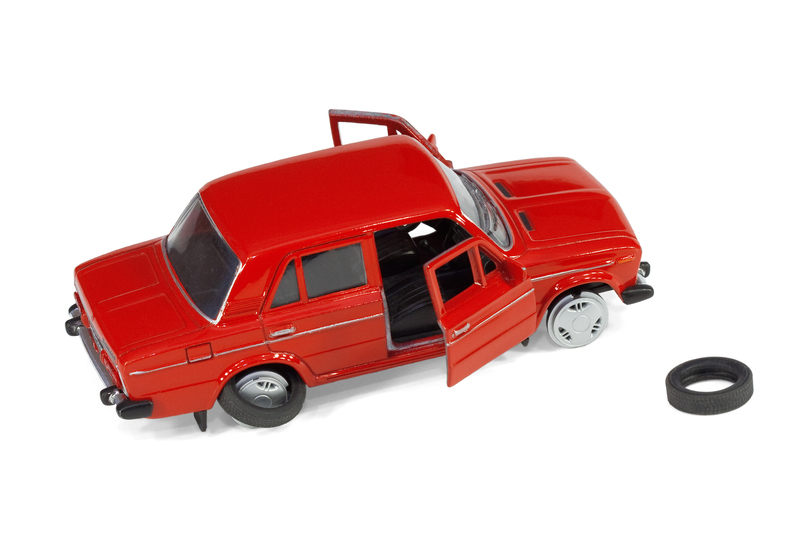A Beginner's Guide to a Plastic-Free Kitchen
Posted on 21/05/2025
The quest for a plastic-free kitchen is not just a trend but a significant step towards sustainability and healthier living. With growing awareness about the detrimental effects of plastic on the environment and human health, more people are turning towards zero-waste lifestyles. Transitioning to a plastic-free kitchen may seem daunting, but with the right strategies and tools, it can be both manageable and rewarding. This comprehensive guide will walk you through essential steps and tips to help you create a kitchen free from plastic.
Understanding the Impact of Plastic in Your Kitchen
Plastic has become ubiquitous in our kitchens, from utensils to storage containers. It's convenient, lightweight, and often cost-effective. However, its widespread use comes at a significant cost. Plastics, especially single-use varieties, contribute heavily to landfill waste and marine pollution. Chemical additives in plastics can leach into food and beverages, posing health risks.
In particular, microplastics - tiny plastic particles - find their way into drinking water and the food chain, accumulating in animal and human tissues. By committing to a plastic-free kitchen, you're taking a crucial step towards reducing your ecological footprint and protecting your health.

Declutter and Identify Plastic Items
Before you embark on the plastic-free journey, it's essential to assess your current kitchen setup. Begin by:
1. Taking Inventory: Note down all plastic items in your kitchen, including storage containers, cutlery, dishes, and wraps.
2. Spotting Single-Use Plastics: Identify items meant for short-term use, like plastic wrap, disposable cutlery, and straws. These items should be the first to go.
3. Distinguishing Reusable Plastics: Some plastics might be reusable, but they can still pose health risks, especially when heated or scratched.
This initial assessment helps you understand the scope of plastic use in your kitchen, allowing for a more targeted approach to replacing and eliminating plastic items.
Making the Switch: Plastic-Free Alternatives
One of the most exciting parts of creating a plastic-free kitchen is discovering and transitioning to sustainable, eco-friendly alternatives. Here's how you can replace common plastic items:
Storage Containers
Glass and stainless steel containers are excellent alternatives to plastic. Not only are they durable and easy to clean, but they also do not react with food. Opt for:
- Glass Jars: Ideal for storing dry goods like pasta, grains, and nuts.
- Stainless Steel Containers: Perfect for storing leftovers and packed lunches.
- Silicone Bags: BPA-free and versatile for food storage, offering flexibility without the plastic.
Food Wraps
Plastic wrap and aluminum foil are commonly used for food storage, but there are sustainable alternatives:
- Beeswax Wraps: These wraps can be reused multiple times and are perfect for covering bowls or wrapping sandwiches.
- Silicone Lids: Stretchable silicone lids are great for covering pots, pans, and bowls, eliminating the need for cling film.
Utensils and Cutlery
Switch out your plastic utensils and cutlery for options made of:
- Bamboo: This eco-friendly material is lightweight, biodegradable, and perfect for everyday use.
- Stainless Steel: Durable and long-lasting, ideal for both cooking and dining.
Cleaning Supplies
Plastic-free living extends beyond food storage to cleaning supplies:
- Natural Bristle Brushes: Use brushes made from coconut fibers or other plant materials.
- Reusable Cloths: Opt for cloths made from organic cotton or bamboo instead of synthetic sponges.
Adopting Sustainable Shopping Habits
A significant part of maintaining a plastic-free kitchen lies in how and where you shop. Consider making these changes:
Bulk Buying
Purchasing in bulk can significantly reduce plastic packaging waste. Bring your containers or bags to local bulk stores to buy grains, nuts, and other staples.
Farmers Markets
Local farmers markets are excellent places to find fresh, plastic-free produce. Engaging with local vendors allows you to buy directly without unnecessary packaging.
Reusable Bags and Produce Bags
Always carry reusable shopping bags and produce bags to avoid plastic bags. Options include:
- Cloth Tote Bags: Durable and versatile for grocery shopping.
- Mesh Produce Bags: Lightweight and perfect for fruits and vegetables.
Creating Habits for a Plastic-Free Kitchen
Transitioning to a plastic-free kitchen involves changing daily habits and routines. Here's how to make it a seamless process:
Meal Planning and Preparation
Plan your meals to minimize waste and avoid the need for plastic packaging. Prepare meals in advance and store them in reusable containers to be more organized and reduce packaging waste.
Smart Storage
Organize your kitchen to make sustainable living easier. Keep glass jars and containers accessible, and label them for easy identification.
Eco-Friendly Cleaning
Make your cleaning solutions using natural ingredients like vinegar and baking soda. Use reusable cloths and natural bristle brushes to maintain a spotless kitchen without plastic.
Reducing, Reusing, and Recycling
While it's essential to reduce plastic use, there will inevitably be situations where plastic sneaks in. Adopt the principles of reduce, reuse, and recycle effectively:
- Reduce: Continuously look for ways to minimize plastic in your kitchen. Avoid buying items with excessive plastic packaging.
- Reuse: Repurpose any plastic items you already have. Reusing plastic containers for storage or craft projects can delay their trip to the landfill.
- Recycle: Properly dispose of plastics by recycling them. Be aware of your local recycling guidelines and ensure you're recycling correctly to prevent contamination.

Staying Committed and Educated
Staying committed to a plastic-free kitchen is an ongoing process. Continually educate yourself about new products and alternatives that can help you in your journey. Connect with online communities and social media groups dedicated to sustainable living for support and inspiration.
Remember, the transition to a plastic-free kitchen doesn't happen overnight. It's a gradual process involving small, consistent changes. Celebrate your progress, and don't get discouraged by occasional setbacks. Every effort counts towards a healthier planet and a more sustainable lifestyle.
Conclusion
Creating a plastic-free kitchen is not just an eco-friendly choice; it's a commitment to healthier living and a sustainable future. By understanding the impact of plastic, identifying alternatives, adopting sustainable shopping habits, creating new routines, and staying committed, you can significantly reduce the plastic footprint of your kitchen. Start small, make consistent changes, and enjoy the journey towards a plastic-free kitchen.










